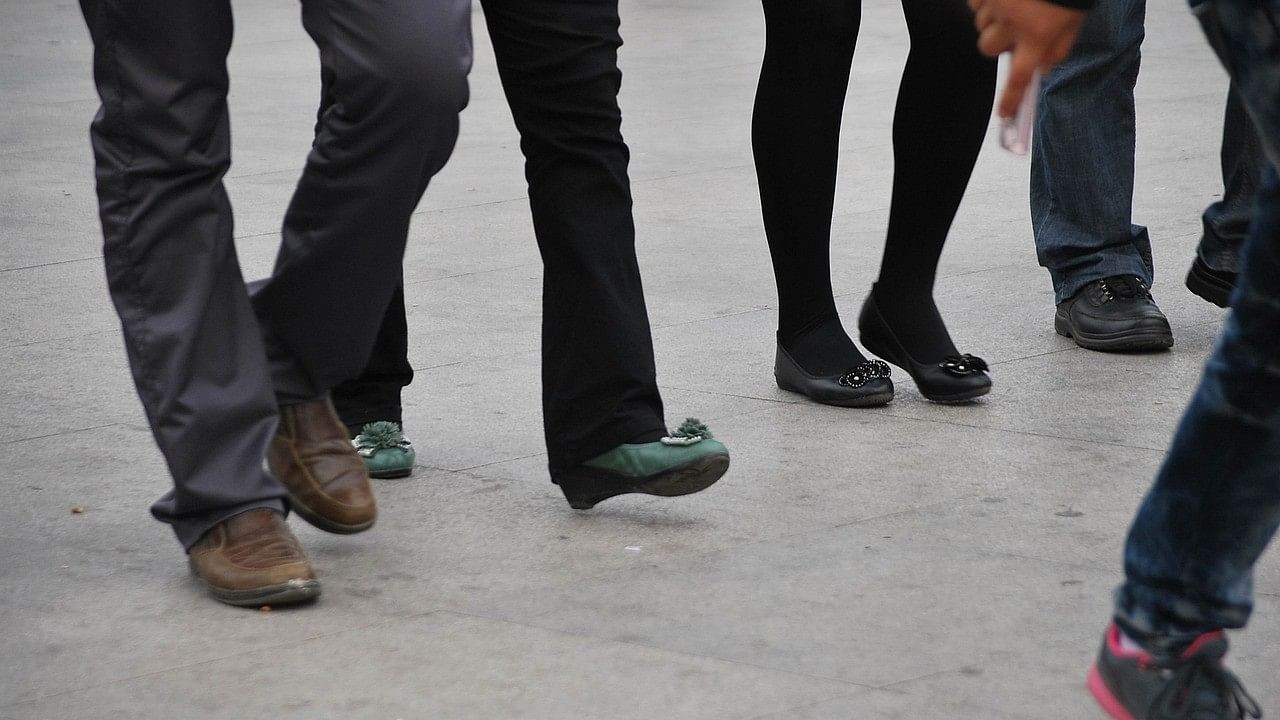
Representative image of people walking.
Credit: Pixabay Photo
A study from last year said Bengalureans waste 10 days in a year driving and about five days sitting through a traffic jam. If you are someone who has experienced the city’s congestion first-hand, that would seem to be a conservative estimate. If you were the one behind the wheel of any one of those cars, then the anguish and pain over the miles-long tailbacks can be quite literal. You would feel a throbbing that starts unnoticeably around your kneecaps and then turns into an unrelenting stabbing pain by the time you get a chance to stretch your legs.
If this happens often enough, then you may be experiencing what is commonly known as ‘driver’s knee’. Think of it as the tennis elbow of the knee, caused by repeated motion of your legs. It’s an injury caused by the repeated motion used in pressing the clutch and brake. Now, consider a different, almost opposite scenario.
You are immobile in a cramped bus seat after spending hours seated at your office desk. Technically you are at rest. Do you think that could hurt your knees? The answer is yes.
In this case, muscles that support the knee may weaken due to a prolonged state of being almost immobilised in the same position. This, in turn, causes additional wear and tear to the patella (kneecap).
The bottom line is that both sedentary lifestyles and overuse of the joints, combined with poor posture habits that have become part and parcel of life in the city, can hurt your knees. The temporary bouts of knee pain induced by such activities are not dangerous in themselves.
However, if you have been ignoring these symptoms for some time, then the temporary discomfort may take on a more permanent appearance in the form of osteoarthritis (OA), also known as wear-and-tear arthritis.
Risks of osteoarthritis
Over time, the knee cartilage may wear down and result in OA which is the most common type of arthritis affecting over 62 million people in India. This breakdown leads to pain, stiffness, and decreased mobility in the affected joints, often making simple tasks like driving or even walking, challenging.
Treatment options
Non-surgical treatment options for osteoarthritis aim to manage pain and joint stiffness if the cartilage lost due to wear and tear cannot be regained. Doctors may prescribe painkillers, corticosteroid injections and physiotherapy as standalone treatments or a combination of more than one of these options depending on an individual’s symptoms.
While physiotherapy and medication may help reduce the overall pain, high-stress activities like driving, climbing stairs or performing physically intensive chores may still be painful. Your doctor may suggest considering knee surgery or total knee replacement to increase or regain joint flexibility. These surgeries are considered safe.
Reduce the stress on the knee
♦ Alternate an hour of sitting with 5 minutes of stretching and walking around.
♦ Maintain a healthy body weight.
♦ Consider using knee-sleeves or a brace while driving, it can help distribute the pressure evenly on the joint. Adjust the back recliner, steering height, and seat cushions to maintain a 120-degree angle with your legs.
♦ Invest in good footwear with adequate cushioning, and avoid wearing heels or dress shoes if you are on your feet a lot.
♦ Get tested for Vitamin D and C deficiency; try to have a nutrient-rich diet.
(The author is a Bengaluru-based joint replacement & arthroscopic surgeon)